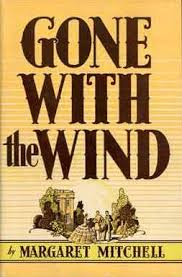 Readers do judge a book by its cover—and its title. A great book with a dud of a title can be overlooked, and a mediocre book with a grabby title will increase its chances of being bought and buzzed. Yet many writers struggle to find the perfect title for the work.
Readers do judge a book by its cover—and its title. A great book with a dud of a title can be overlooked, and a mediocre book with a grabby title will increase its chances of being bought and buzzed. Yet many writers struggle to find the perfect title for the work.
Writing Tip for Today: How important is your book’s title and how can you craft titles which better target your readers?
Go Upside Down and Punny
If we take recent book, movie and TV titles as examples, it’s easy to see how using clichés in an unusual way or turning older titles upside down can be effective. Song titles can also be put to new uses (you can’t copyright a title). For instance, “My Girl,” the Temptations hit song, was also used in the 1991 movie of the same title. And who can forget “Stand by Me?” The list is long: The Catcher in the Rye (Salinger); Go Tell it on the Mountain (James Baldwin); Dance with Me (Luanne Rice), She’s Come Undone (Wally Lamb) and many more are also song titles.
Another angle is to apply a common cliché or popular phrase and twist it: Jennifer Weiner’s Good in Bed; The War of Art (Steven Pressfield) instead of The Art of War; Raymond Carver’s Will You Be Quiet Please?; Mitch Albom’s Have a Little Faith. Cozy mystery series are well-known and fertile ground for punny titles that make us laugh. A Tale of Two Biddies by Kylie Logan riffs off Dickens, and who can resist Shelly Costa’s, You Cannoli Die Once? These series often feature titles about the sleuth’s hobby, occupation or locale. And many are laugh-out-loud funny.
Subtitles Sell the Story
In nonfiction, a grabby title might pique curiosity but the subtitle must speak to the reader’s needs. In my opinion, while the main title should go for the emotional or gut reaction, the subtitle must be plain in stating what the reader will get in reading it. For instance, Terry Brooks’ 2003 book title, Sometimes the Magic Works, might only be obvious to fans of his fantasy novels, so the subtitle, Lessons from a Writing Life, explains that this is nonfiction and it’s about the writing craft. Likewise, the 2008 book title, Beautiful Boy, by David Sheff, illustrates the poignancy of writing about his son through the lens of the John Lennon song of the same name, but only in the subtitle do readers get a glimpse of the story: A Father’s Journey Through His Son’s Addiction. And Blue Like Jazz is a poetic title, whereas the subtitle, Nonreligious Thoughts on Christian Spirituality, quickly grounds the reader.
If you are writing nonfiction or memoir, a subtitle is essential. A good guideline to follow is, the more poetic or emotion-grabbing a title, the more the subtitle should clarify that reaction with the substance of the book. Readers need to see their needs reflected in both ways.
The Heart of the Promise
Most importantly, for both fiction and nonfiction, a book’s title should aim at the heart of the book’s promise. Is the story going to be about love lost and regained? A murder solved? The ins and outs of marriage? In novels, the lack of a subtitle means that the title must bear all the weight of luring the reader to choose that book. Think of some of the best titles and try to identify why you think they are effective. It’s no secret that editors will often re-title books or have a title’s final say, but if you start your manuscript with a strong title, that title is a great way to market the book to the first wave—editors and agents.
Consider Margaret Mitchell’s 1936 classic, Gone with the Wind. Did you know she first thought to call it Bugles Sang True or alternatively, Not in Our Stars? Neither of those titles has the sweeping poetry that she finally decided to use. The title is taken from a poem, Non Sum Qualis Eram Bonae sub Regno Cynarae, by Ernest Dowson. John Green’s The Fault in Our Stars comes from Shakespeare. My point is that poetry or literature can often serve to provide a metaphorical title that encompasses the theme of the novel. I keep my Emily Dickinson collected works and other favorite poets handy for titling purposes.
And finally, look for titles in your manuscript itself. A line a character says or a setting or predicament can often sum up the character’s quest or fight. The more you write, the better you’ll be at finding a title that will not only grab an agent or editor, but will hook readers too. What’s your preferred titling method?




